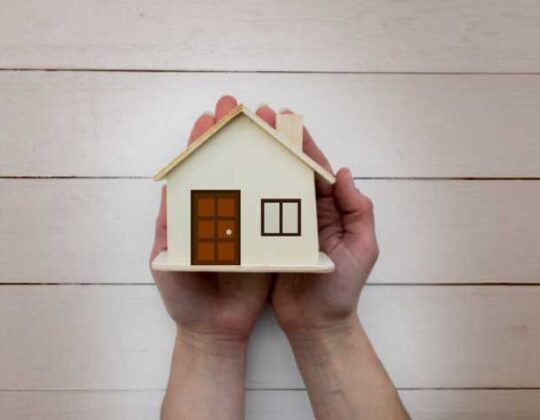Living in a wooden house imparts a distinct charm and warmth, but it also raises questions about the coverage and compensation available through home insurance, particularly in the unfortunate event of a fire. This article aims to unravel the complexities surrounding home insurance for wooden houses, exploring the potential for compensation in the aftermath of a fire and the steps homeowners can take to safeguard their investment and well-being.
1. Understanding Home Insurance:
Home insurance is a financial safeguard that provides coverage for damages to your home and its contents. Policies can vary, but they typically include coverage for perils such as fire, theft, vandalism, and natural disasters. The specific coverage you have depends on the type of policy you choose and the endorsements you add.
2. Fire Damage and Home Insurance:
Fire is a peril covered by most standard home insurance policies. Whether your house is constructed of wood, brick, or other materials, fire insurance is a fundamental component of home coverage. In the event of a fire, your insurance policy should help cover the costs of repairing or rebuilding your home, replacing personal belongings, and providing temporary housing if necessary.
3. Wooden Houses and Fire Risk:
Wooden houses have a unique aesthetic appeal and are prevalent in many residential areas. However, it’s no secret that wood is more susceptible to fire than materials like brick or concrete. This susceptibility doesn’t necessarily exclude wooden houses from insurance coverage; instead, it underscores the importance of having comprehensive coverage tailored to the specific characteristics of your home.
4. Key Components of Home Insurance for Fire Damage:
Dwelling Coverage: This component covers the cost of repairing or rebuilding your home if it is damaged or destroyed by a covered peril, including fire. The coverage amount should reflect the estimated cost to rebuild your home.
Personal Property Coverage: This covers the replacement cost of your personal belongings, such as furniture, clothing, and electronics, that are damaged or destroyed in a fire.
Additional Living Expenses (ALE): If your home becomes uninhabitable due to fire damage, ALE helps cover the costs of temporary housing, meals, and other necessary expenses while your home is being repaired or rebuilt.
Liability Coverage: This component protects you in case someone is injured on your property due to a fire, and you are found legally responsible. It covers medical expenses, legal fees, and damages awarded in a lawsuit.
Fire Department Charges: Some policies cover charges incurred from the fire department’s response to a fire on your property.
5. Steps to Take After a Fire:
Ensure Safety: Prioritize the safety of yourself and your loved ones. Evacuate the premises and contact emergency services to extinguish the fire.
Notify Authorities: Report the fire to the local fire department and law enforcement. Obtain a copy of the fire department’s incident report, as it will be crucial for your insurance claim.
Contact Your Insurance Company: Notify your insurance company as soon as possible. Provide them with details about the fire, including the date, time, and extent of the damage. Be prepared to provide the incident report from the fire department.
Document Damages: Take photos and videos of the damage to your home and belongings. This visual documentation serves as crucial evidence for your insurance claim.
Make Temporary Repairs: If it’s safe to do so, make temporary repairs to prevent further damage. This may include boarding up windows, covering a damaged roof, or other measures to secure the property.
Keep Records of Expenses: Keep a record of any expenses related to the fire, including temporary housing costs, meals, and other necessities. These expenses may be eligible for reimbursement through your insurance policy.
6. Wooden House-Specific Considerations:
While the coverage components remain consistent, homeowners with wooden houses may encounter specific considerations:
Materials and Construction Details: Provide your insurance company with detailed information about the materials used in the construction of your wooden house. This information can impact the assessment of coverage and potential premiums.
Fire Prevention Measures: Emphasize any fire prevention measures in place, such as smoke detectors, fire extinguishers, and the proximity of your home to fire hydrants or fire stations. Taking proactive steps to reduce fire risk can positively influence your insurance coverage.
Building Codes and Upgrades: Be aware of local building codes and regulations related to fire-resistant materials. Consider upgrades or renovations that align with these codes, as they may enhance your home’s fire resilience and, subsequently, your insurance coverage.
7. Mitigating Fire Risk for Wooden Houses:
Install Smoke Alarms: Ensure that your home is equipped with working smoke alarms on every level. Regularly test and replace batteries to maintain optimal functionality.
Clear Vegetation: Keep vegetation and flammable materials away from the exterior of your home. This reduces the risk of fire spreading to your house.
Fire-Resistant Treatments: Consider applying fire-resistant treatments to the exterior of your wooden house. These treatments can add a layer of protection against flames.
Maintain Defensible Space: Create a defensible space around your property by removing dead vegetation and maintaining a safe distance between trees and your home.
Fire-Resistant Roofing: Explore the option of using fire-resistant roofing materials. Class A-rated roofing materials are designed to be highly resistant to fire.
8. Insurance Premiums for Wooden Houses:
While the material of your home may influence insurance premiums, it’s important to note that other factors also play a significant role. These factors include the location of your home, its age, the presence of fire hydrants nearby, your claims history, and the overall fire risk in your area.
9. Conclusion: Securing Your Haven with Adequate Coverage
Living in a wooden house doesn’t preclude you from obtaining comprehensive home insurance coverage. In fact, understanding the nuances of your home’s construction materials allows you to take proactive steps in securing adequate coverage tailored to your needs. The key lies in transparency with your insurance provider, implementing fire prevention measures, and being prepared to navigate the claims process should the unfortunate occur.
By staying informed and actively mitigating fire risk, homeowners can enjoy the warmth and charm of their wooden abode with the assurance that they are guardians of their haven, supported by a robust home insurance policy designed to provide comfort and protection in times of adversity.









